Last updated on August 28th, 2024 at 06:08 pm
How to Sell on Etsy: A Beginner’s Guide
If you are reading this post, you might be new to Etsy. I still remember the struggles I faced when I opened my first shop here. I wish I could have found some good resources to help me navigate smoothly during my “Etsy” journey. Therefore, I have written this comprehensive guide on how to successfully sell on Etsy to help you as much as I can based on my experience.
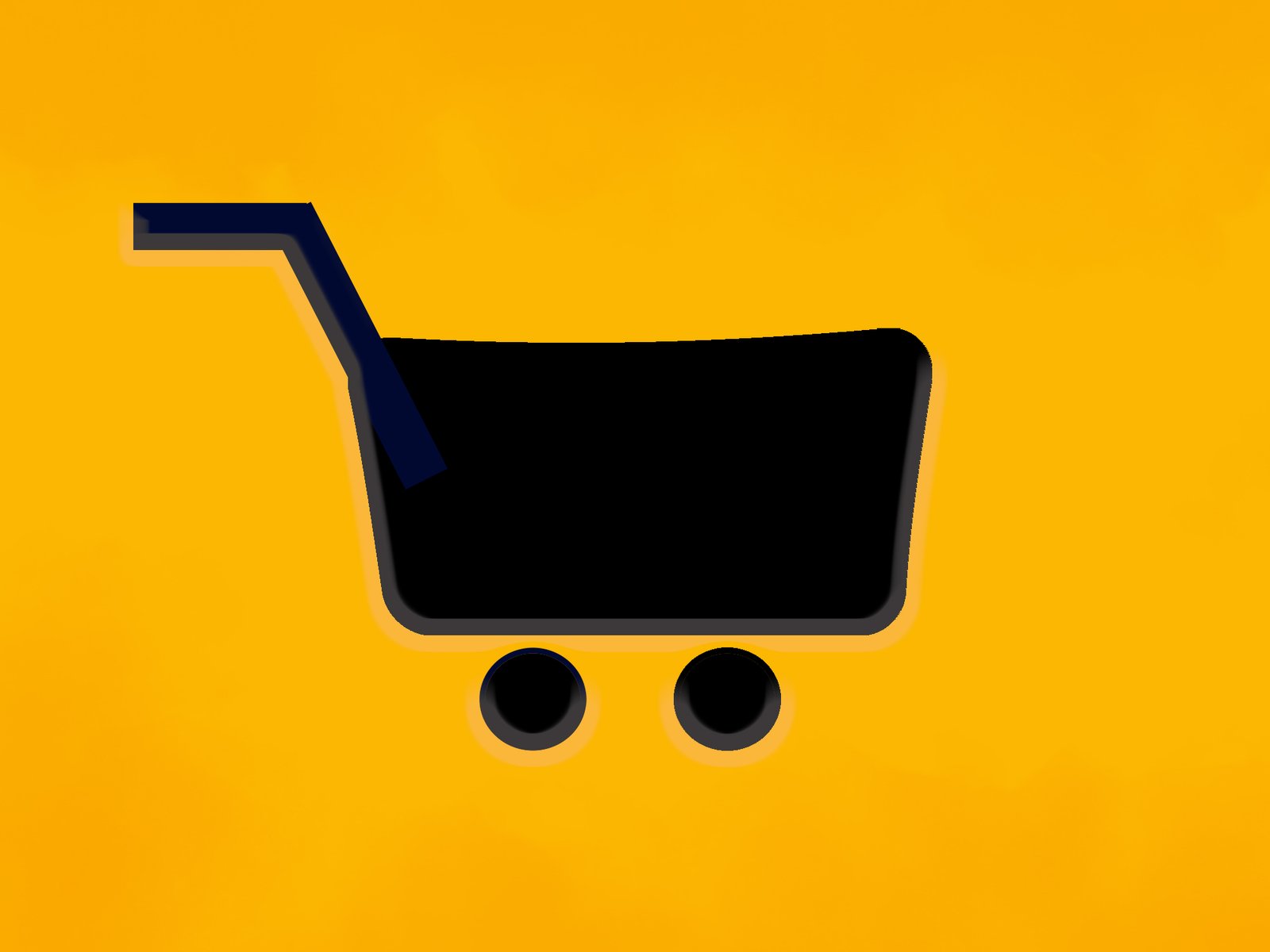
1. Brainstorm a list of product ideas to sell on Etsy
Etsy is a marketplace for artisans where you can sell products designed by you. It is important to note that selling products you did not design is prohibited and violates Etsy’s terms and conditions. For example, you cannot simply drop ship pre-designed products on Etsy because you have no role in creating them. However, you can sell print-on-demand products on Etsy as long as you create the original design. For instance, you can sell T-shirts, mugs, and socks on Etsy through a print-on-demand fulfillment model, provided that you have created the design printed on these items.
What are the most popular product categories on Etsy?
The products sold on Etsy can be broadly classified into digital and physical products. The popular products in both categories are as below:
1. Digital Products
- Customizable templates, for example:
- Resume templates
- Party invitation templates
- Wedding templates,
- Business card templates
- Social media templates
- Digital planners, for example:
- Daily planner
- ADHD planner
- Wedding planner
- Custom portraits
- Printable stickers
- Printable art, for example:
- Paintings
- Illustrations
- Watercolor graphics
- Mockups
- Coloring pages
- Website templates, for example:
- Wix templates
- Squarespace templates
2. Physical Products
- Print-on-demand products, for example:
- T-shirts
- Mugs
- Socks
- Phone covers
- Home Furniture
- Party decor for weddings and other special events
- Home decor, for example:
- Paintings
- Pillow covers
- Curtains
- Jewelry
- Journals, for example:
- Reading journals
- Sports journals
- Mental health journals
- Stickers
The above list is not exhaustive but covers popular items commonly sold on Etsy. Etsy is a dynamic marketplace that always has numerous emerging niches with good potential. Also, within each niche, there can be many sub-niches with high demand and less competition. I have written a detailed article about finding profitable niches and sub-niches under the title How to Find Profitable Niches on Etsy?
2. Evaluate the profitability of each product idea
Once you come up with product ideas, the next step is to assess their profitability potential. Basically, you can perform a quick analysis to estimate the profit. It is completely okay if you don’t know exact numbers; you can perform this analysis based on best estimates. Key factors to be considered in your profitability assessment are as follows:
- Average Price: There are two ways to identify this. One way is to scan Etsy listings for the price and get a rough estimate. Another more precise way is to use Etsy research tools that provide pricing data on Etsy listings. You can read my article on 24 Best Etsy Research Tools Comparison (2024). Keep in mind that pricing your listings significantly higher than average can be challenging unless you offer something unique.
- Cost: Estimate the product’s production costs and other associated administrative expenses.
- Assess Etsy Fees: There are three main types of fees associated with Etsy:
| Fee Type | Charge |
|---|---|
| Listing Fee | 0.20 USD for each item on the initial listing and every four months if renewed. |
| Transaction Fees | 6.5% of the price plus the amount charged for delivery and gift wrapping. |
| Offsite Ad Fee (if applicable)* | 15% if sales made are below 10,000 USD and 12% if sales made are over 10,000 USD over the prior 365 days. |
*Etsy advertises your products on Google and other social media sites, such as Pinterest. If a sale happens through an offsite ad, then the offsite ad fee will apply; otherwise, it will not apply.
You can use the profit calculator on eRank to perform your cost-benefit analysis.
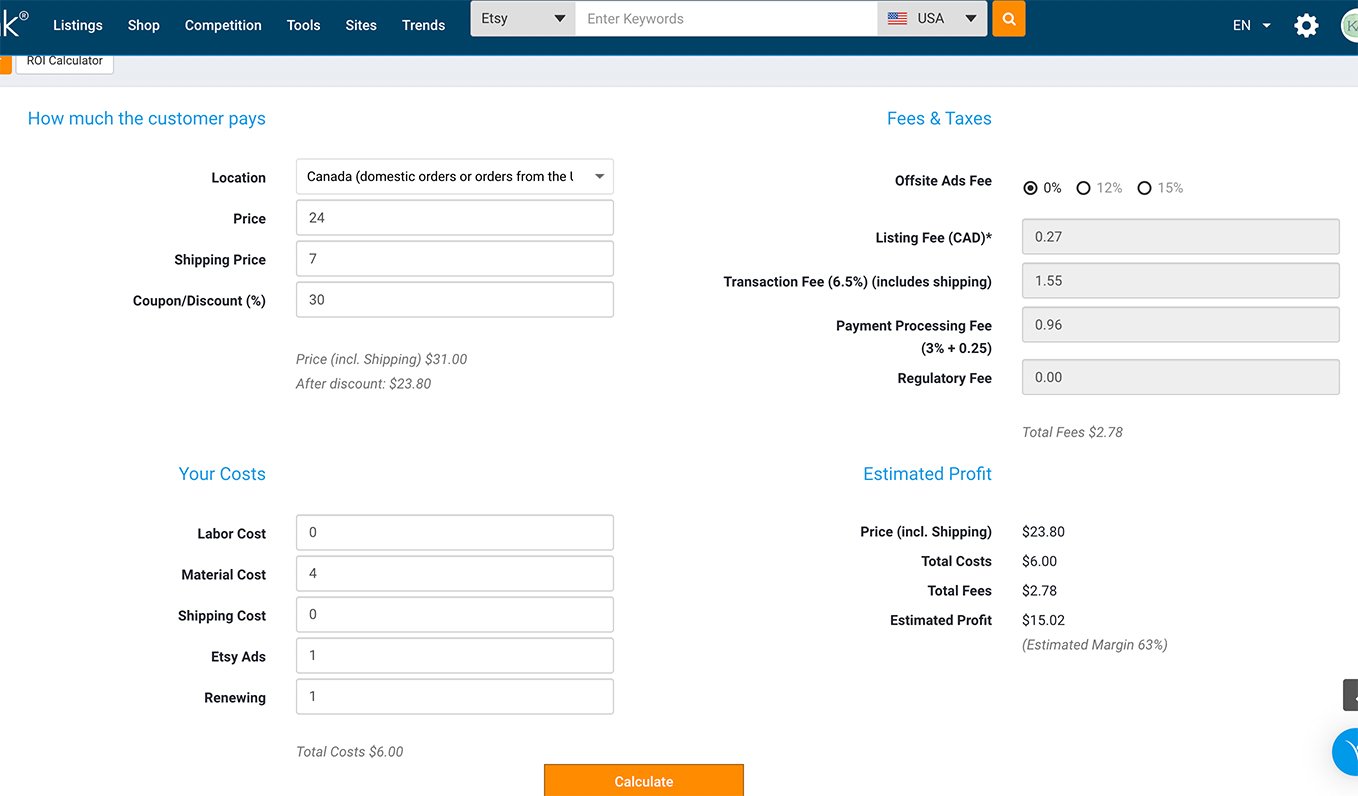
Source: eRank
3. Identify profitable niches within the chosen product category
Once you have chosen a product category to sell on Etsy after the profitability assessment, the next step is to identify profitable niches and sub-niches within this product category.
Concept of a niche and sub-niche
A niche is a specialized product category within a generic product category that appeals to customers with a specific interest. For instance, if you plan to sell digital customizable templates on Etsy, examples of a niche can be as follows:
- Resume Templates
- Birthday invitations
- Wedding invitations
- Graduation party invitations
- Instagram templates
Further, within a niche, you can narrow down your focus to an even more specific category. I call it a sub-niche. For instance, within the wedding invitations category, examples of sub-niches can be as below:
- Minimalist wedding invitations
- Destination wedding invitations
- Floral wedding invitations
- Vintage wedding invitations
- Retro wedding invitations
- Crest wedding invitations
Another example could be a shop selling t-shirts. Within the t-shirt category, there can be various niches, like:
- Dog lover t-shirts
- Nurse t-shirts
- Engineer t-shirts
- Coffee Lover t-shirts
Further, within the “Nurse t-shirts” niche, there are various sub-niches, such as the following:
- Oncology nurse
- Pediatric nurse
- ER nurse
It is important to note that meaningful sub-niches might not necessarily exist for all niches. You can always think creatively and find sub-niches in any niche; however, it might not be a good strategy from a business perspective if the demand for that sub-niche is low. Let’s take an example of the “bee stickers” niche. It is difficult for me to think of any sub-niches within this niche. I am not saying that there cannot be any sub-niche within this niche; however, you need to assess the profitability of that sub-niche from a business perspective.
How to find profitable niches and sub-niches
A profitable niche and sub-niche mainly exhibit two indicators, namely:
- High search volume, indicating a high demand.
- Fewer competing listings, indicating low competition.
I have written a detailed article on this topic. Please read my article on How to Find Profitable Niches on Etsy?
Why are niche and sub-niche strategies important to succeed on Etsy?
There are two main reasons why niches and sub-niches are more important than ever before on Etsy:
- Without a proper niche strategy, it can be challenging to rank your products in Etsy search results and gain visibility. No visibility means no sales. Therefore, it is important to find niches that have high demand and, preferably, low competition.
- Over the years, competition on Etsy has increased. People are looking for more specialized products that match their expectations. Not every product you design is going to appeal to customers. Focusing on a sub-niche will offer your customers a range of products to choose from, which increases the chance of making a sale. For instance, within the “wedding invitations” niche, if you focus on the “minimalist wedding invitations” sub-niche, you can create multiple variations and experiment with different fonts, styles, colors, etc., to offer a variety. This allows you to go in-depth and create something appealing. However, if you choose to sell across different sub-niches like minimalist, floral, or vintage with minimal variety within each sub-niche, you might end up with designs that do not sell. Since many shops, especially the old ones, offer a variety of products, you can counter this competition by focusing on a sub-niche.
4. Choose your Etsy shop name
There are three approaches to picking a shop name on Etsy:
Approach 1: Picking a specific niche name
This means that you include your sub-niche and niche name within the shop title. For example, if a shop is selling minimalist wedding stationery, it can pick a name like “The Minimalist Wedding Paperie”. This name perfectly conveys your sub-niche (minimalist) and niche (wedding) to customers. Let’s discuss the pros and cons associated with this approach:
Pros:
- Directly conveys your shop theme and specialty to anybody who reads the name.
- The name prompts customers interested in that niche to click on your shop and explore further.
Con:
- Not suitable if you plan to enter additional sub-niches in the future to widen your customer base.
Approach 2: Picking a broader name
This means that you pick a name that relates to a broader product category, like Vibrant Stickers, Elegant Wedding Invites, and Style Haven.
Pro:
- Potential to enter additional sub-niches in the future.
Con:
- Does not directly convey your shop specialization.
Approach 3: Including your name in the shop title
You can also include your name in the shop title. For instance, “Sticker Art by Maria James” or “Sticker Art by MJ”. Let’s discuss the pros and cons associated with this approach:
Pros:
- Showcases you as an artist with specialized skills.
- Works best for designers with an established name.
- Gives a sense of personal touch.
Cons:
- Might not work well if you are a beginner.
- Might not be suitable for all product types, like digital products.
I prefer approach 2 because it allows you to sell in various niches. For instance, if you name your shop that sells t-shirts “Style Haven”, you can offer products in various niches, such as dog lover T-shirts, lawyer T-shirts, coffee lover T-shirts, and many other niches. On the other hand, if you name your shop after a specific niche, like “Dog Lover Tees”, you might find it difficult to expand into other niches in the future. It is also important to note that a niche may reach its full potential with no further profitable product ideas to pursue. In this case, the only way to expand your Etsy shop is by entering additional niches.
5. Register your Etsy business
Initially, registering your business is optional on Etsy. You can start as an individual seller on Etsy without registering your business. However, you will need to eventually register your business at some point in the future when you hit a certain threshold in sales. This threshold varies by country and is defined by income tax laws. Nevertheless, I have identified an instance when you should register your business right away rather than waiting until later.
When should you register your Etsy business right away?
- Selling Physical Products: Especially when selling physical products, registering an LLC offers protection for your personal property against potential legal claims from customers in case of any personal injury or damage, considering a worst-case scenario.
If you are interested in registering your business right away, you can use an online service called Ownr, which offers a relatively inexpensive way to register your business.
6. Design and list at least 5 products to open your Etsy shop
Although you can open your shop with just one product, Etsy advises you to add at least 5 products when opening your Etsy shop. The higher the number of products, the better. During the design process, you should perform the following steps:
A. Research your niche products on Etsy
Search your niche products on Etsy and look at competing shops for inspiration, but do not copy their designs. You should try to analyze which designs are trending and which designs are already selling well on Etsy. When you search for a specific product on Etsy, the best sellers generally appear on the first few pages. Accordingly, scan these listings and analyze what makes these products the most liked. If you click on a product, Etsy also displays the number of baskets that the product is currently in. This information can also be used to assess the popularity of a product during your research. A more precise way is to use an Etsy research tool to identify the best sellers on Etsy. You can read my article on 24 Best Etsy Research Tools Comparison (2023).
B. Design your product
After you have performed good research, the next step is to design your product. This is the most crucial part that demands your utmost focus. Let’s talk about the dos and don’ts of designing a product:
Dos
- Experiment with your designs and explore different versions. For example, if you plan to sell templates, try to experiment with different colors, fonts, graphics, and positions of various elements within a template.
- Ask your family and friends for feedback.
- Keep refining your product.
Don’ts
- Avoid getting stuck in perfectionism.
- Start simple. Avoid complex designs in the beginning.
7. Take the finest images of your products
I can’t stress enough how important listing photos are; they are the first thing customers notice about your product. High-quality listing photos not only showcase the best version of your product but also demonstrate the professionalism of your shop, increasing trustworthiness.
Best practices for Etsy listing photos
- Ample Lighting: The product should be showcased in a bright setting to make it clearly visible to potential buyers.
- High-Resolution Images: The listing photos should be in high resolution to avoid blurriness.
- Multiple Angles of Product: The listing photos should depict the product from different angles to give a complete picture to potential buyers.
- Uncluttered Background: The background of the photos should be neat and organized to avoid distractions.
Ideal photo dimensions
- 2000 x 2000 pixels: I recommend this dimension because it works best for viewing on both website and phone.
- Other acceptable dimensions are:
- 2700 x 2000 pixels
- 4:3 inches
- 2:3 inches
- 1:1 inches
- 3:2 inches
- 3:4 inches
- Ideal resolution for listing photos is at least 72 PPI.
If you are not well-versed in these technical details, seek help from your friends who have a better understanding or watch online videos to get familiar.
8. Consider adding a listing video
According to Etsy statistics, listings with videos have a higher chance of converting into sales. Essentially, a listing video provides customers with a feel of the product. The video should present a high-resolution view of a product from multiple angles in good lighting. In the case of digital products, you can use screen recorders to create a brief video updating the template. Please note that only one video per listing is allowed.
9. Set up your Etsy shop
- Go to the Etsy home page.
- Click on “Sell on Etsy” under your profile name.
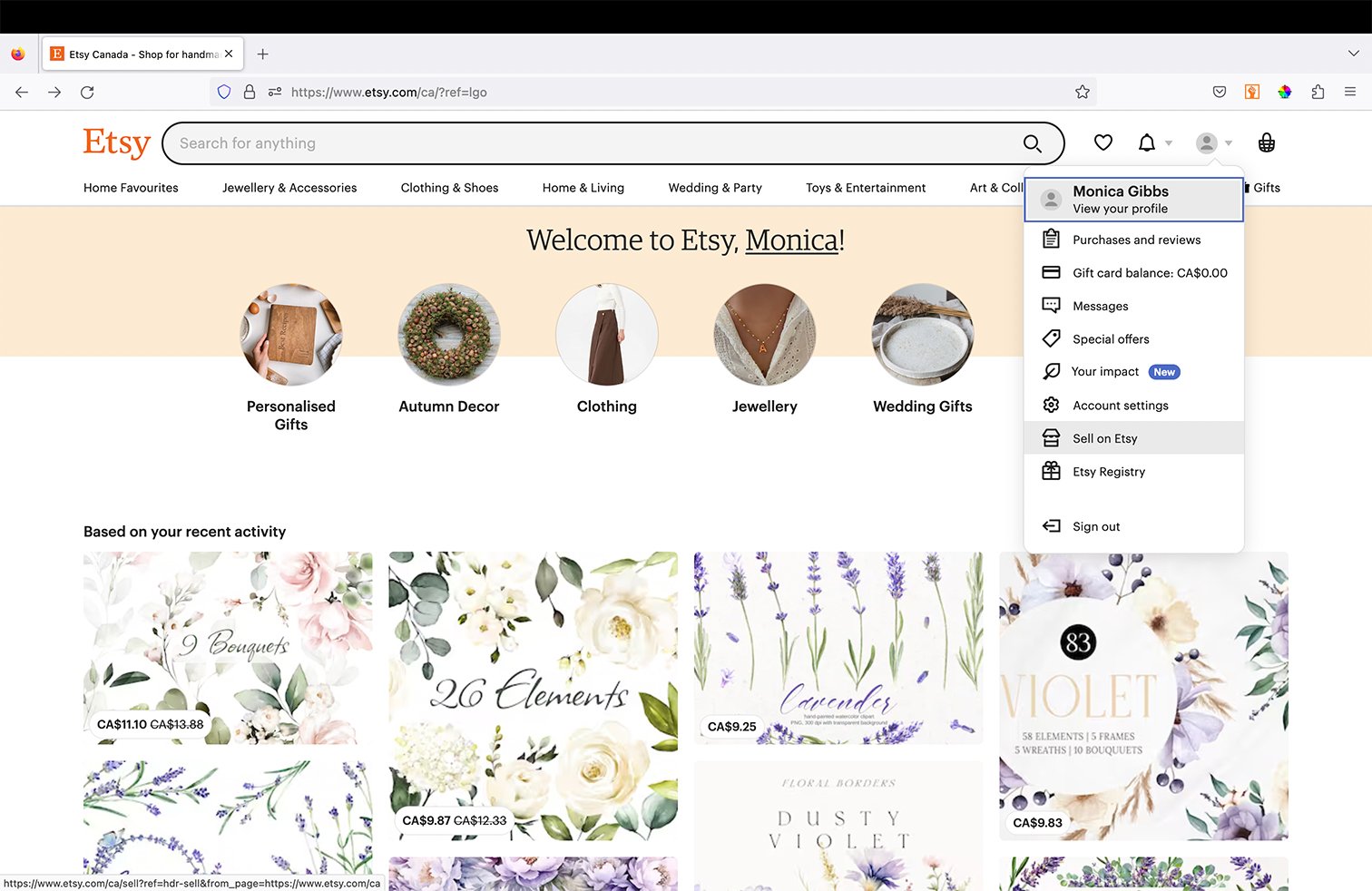
- Enter your shop name and check availability. Etsy is a huge marketplace, and it’s always possible that your shop name ideas have already been taken.
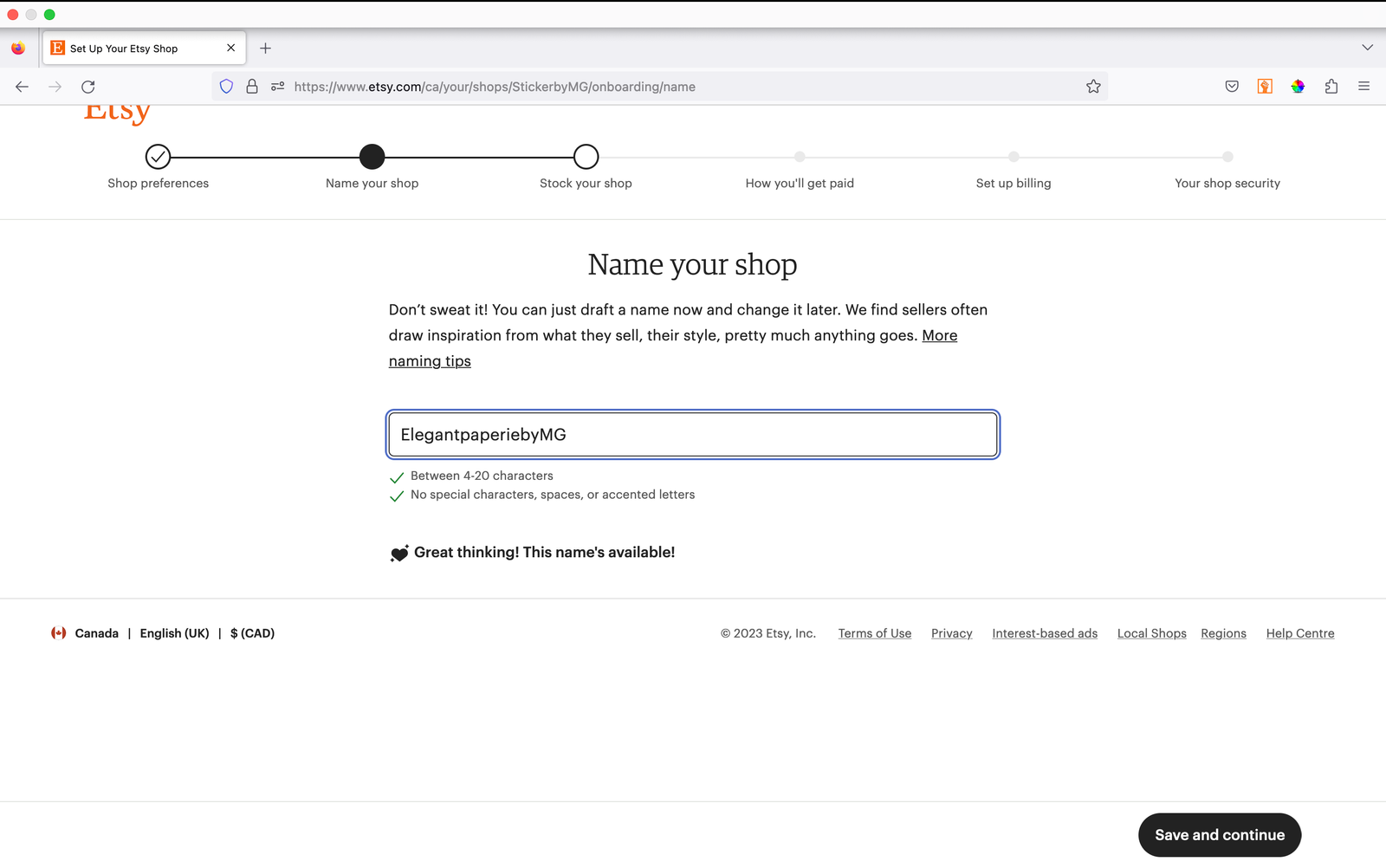
- Upload your listing photos and videos:
- You can upload a maximum of 10 photos; it is advised to use all of them.
- Ensure that the last 1-2 photos are informative with details about the product, delivery times, sizing, dimensions, variations, specific instructions, and any other important information for your customers to know.
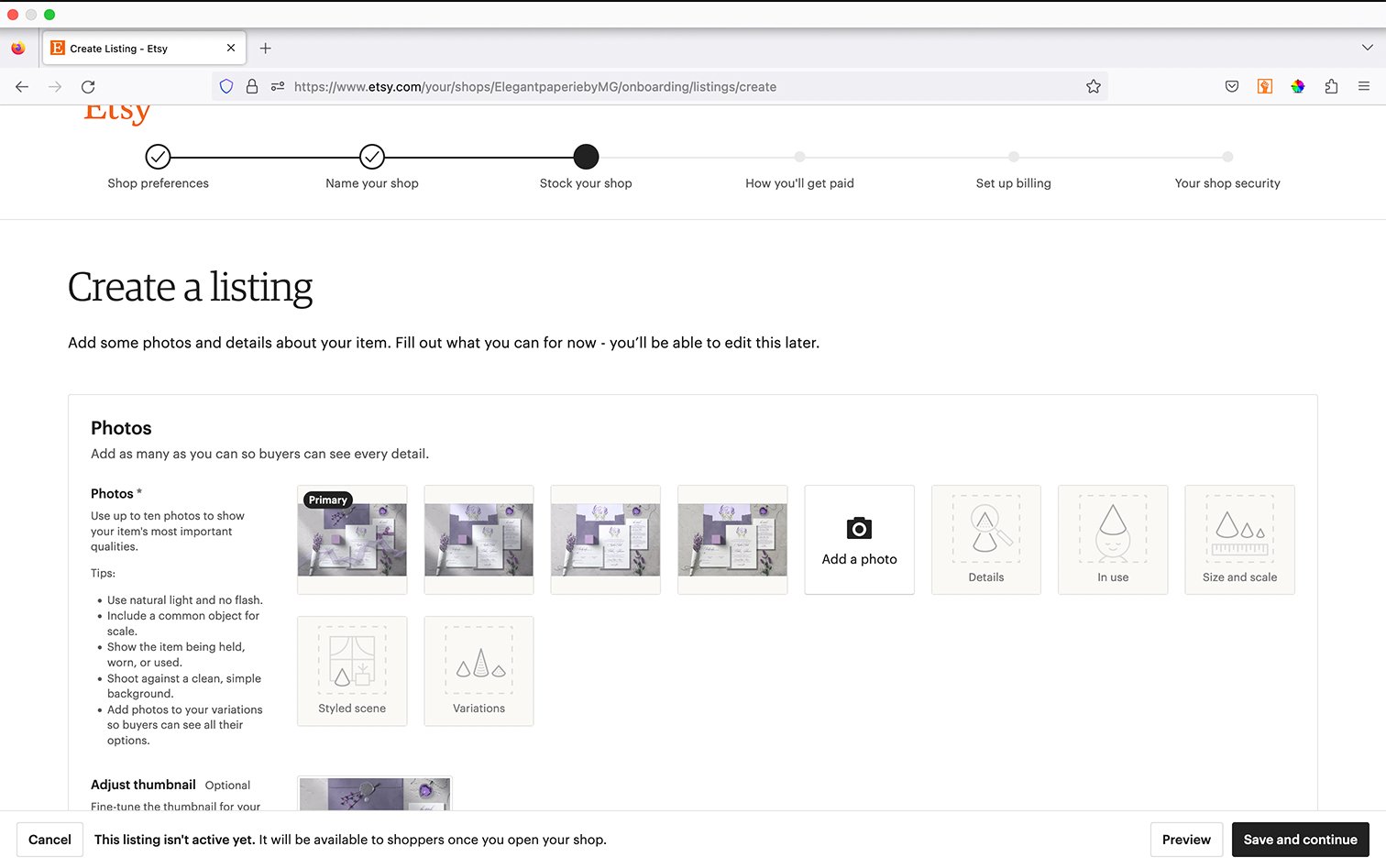
- Enter the listing title, description, and other details:
- The title section allows up to 140 characters.
- Ensure that you maximize character usage by including alternative names to optimize your Etsy listings.
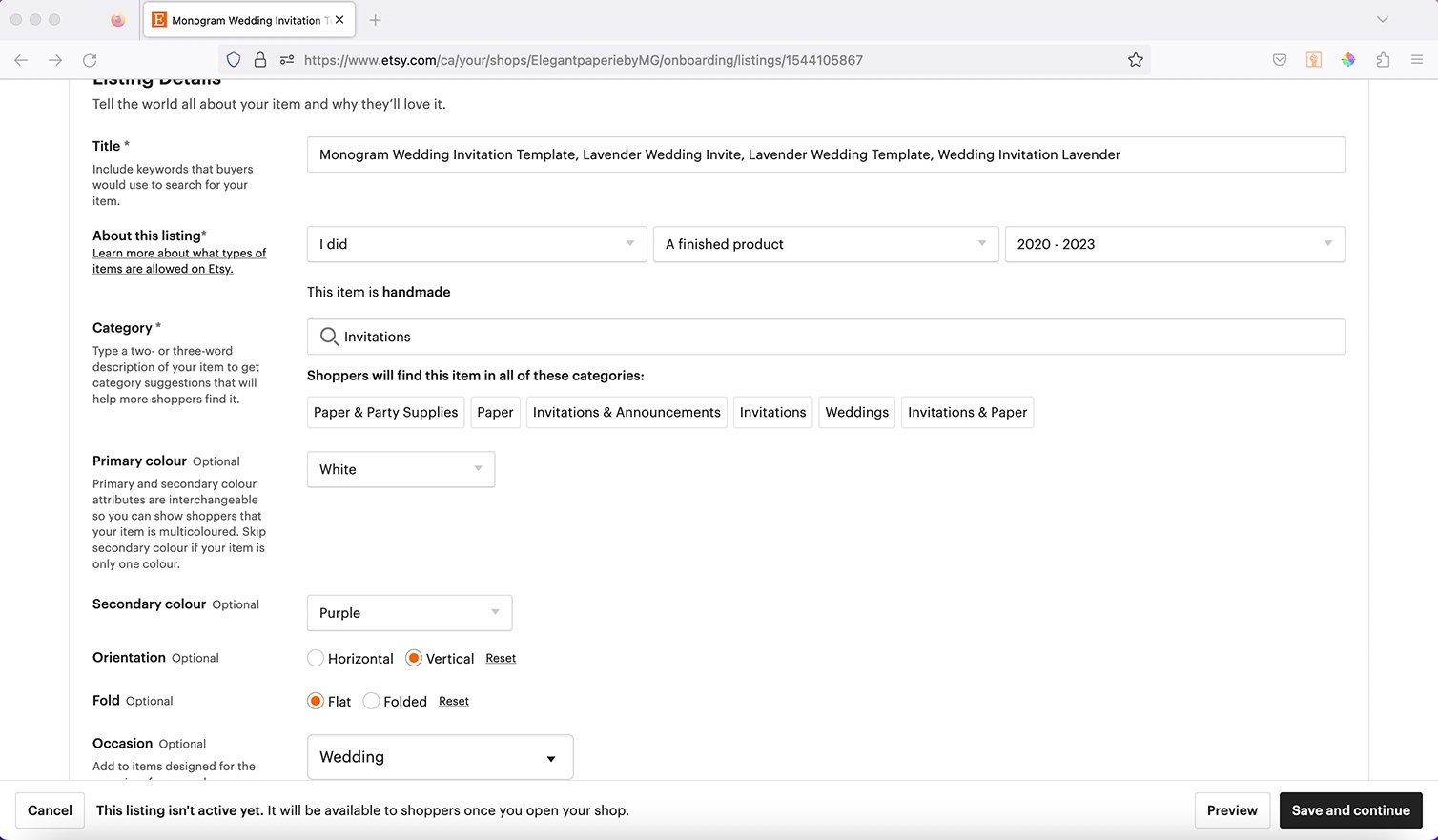
- Add tags, price, and quantity available:
- You can add up to 13 tags, with each tag having a 20-character limit.
- Make the most of the available tags to boost your listing’s visibility in search results. Consider using an Etsy research tool to generate tag ideas.

- Enter the personalization instructions:
- For personalized goods, provide details about the information you need to collect from buyers in the “Instructions for Buyers” section.
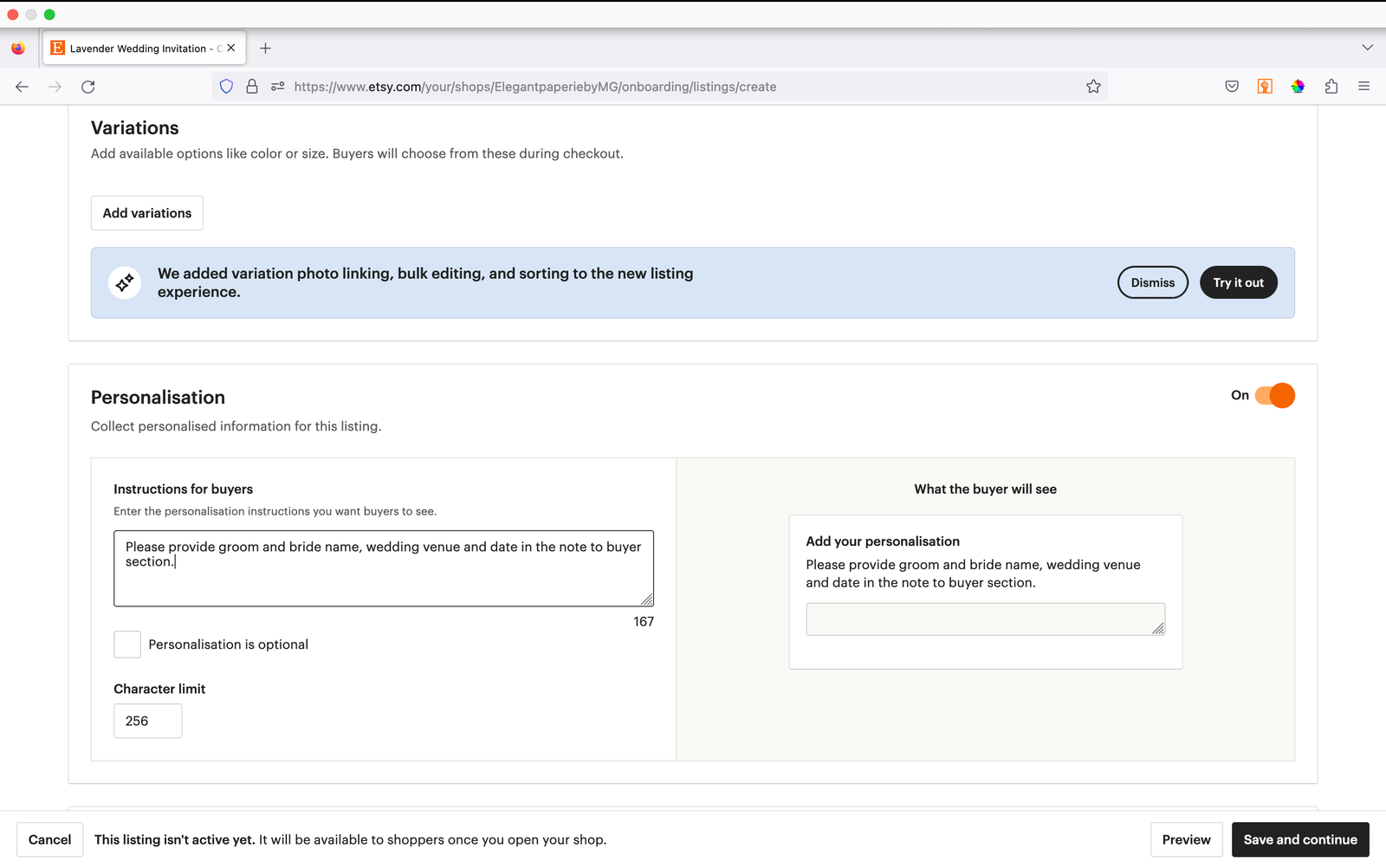
- Add dimensions and weight for physical products (not applicable for digital products).

- Add a Return Policy:
- Choose from Etsy’s pre-defined lists, or
- Create your own custom policy for your Etsy shop.

- Add Banking Details
- Provide your banking details to get paid for sales.
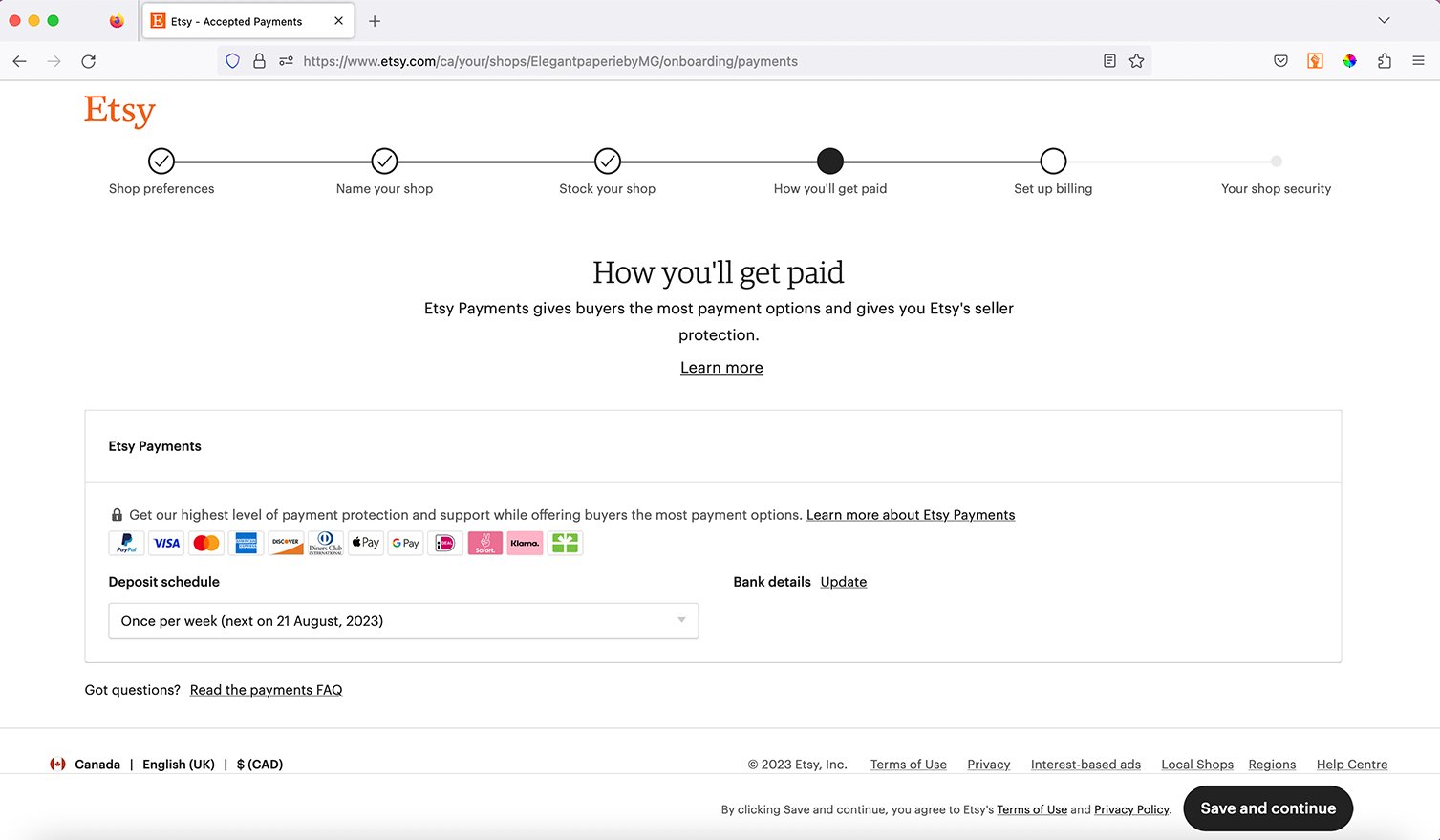
- Set up Billing
- Enter your credit or debit card details to pay for Etsy charges, such as transaction fees, listing fees, and advertising fees.

- Set up Authentication:
- Set up authentication to secure your account.
- Click the “Open Your Shop” button.
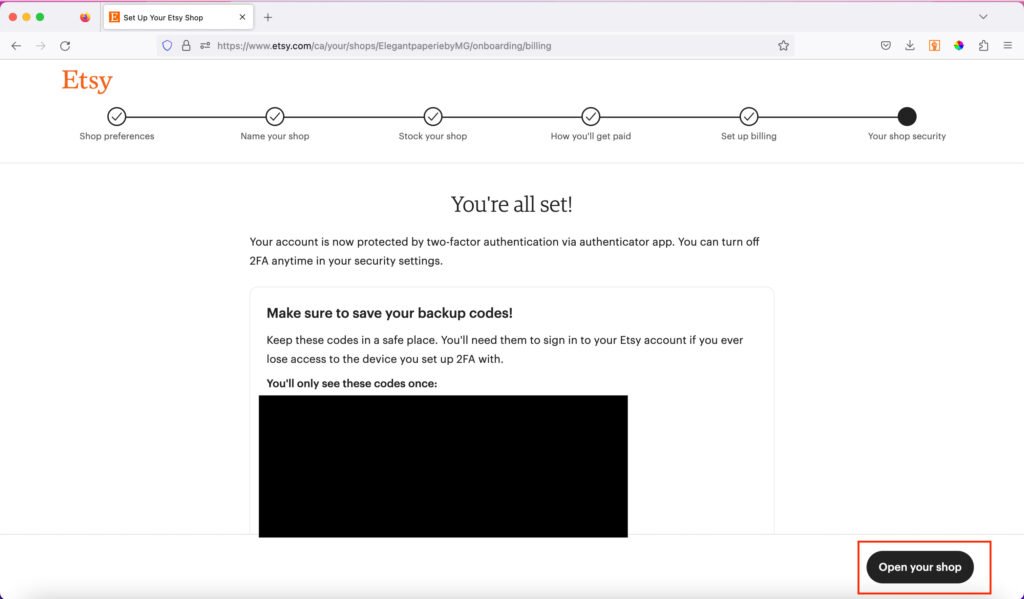
Design an awesome cover photo and shop icon
You can use your preferred software to design the cover photo and shop icon. However, if you don’t have design expertise, you can always use the Etsy shop templates available in Canva for both the cover photo and shop icon. You can access these templates by clicking the “Create a design” tab on the home page.
Ideal dimensions for the Etsy shop cover are 1200 x 300 pixels, and for the shop icon, they are 500 x 500 pixels.

- Once you click on the “Etsy Shop Cover” option in the drop-down menu, you will be redirected to a page showing Etsy Shop Cover templates on the left side. You can update these templates for your shop. Alternatively, you can design your own unique cover with the graphic elements and fonts available in Canva.

- Similarly, there are shop icon templates available in Canva that you can customize for your shop. Alternatively, you can also design your own unique shop icon using the graphic elements and fonts available in Canva.

- As the final step, upload your cover photo and shop icon to the home page of your shop, and you are all set for an exciting Etsy journey!
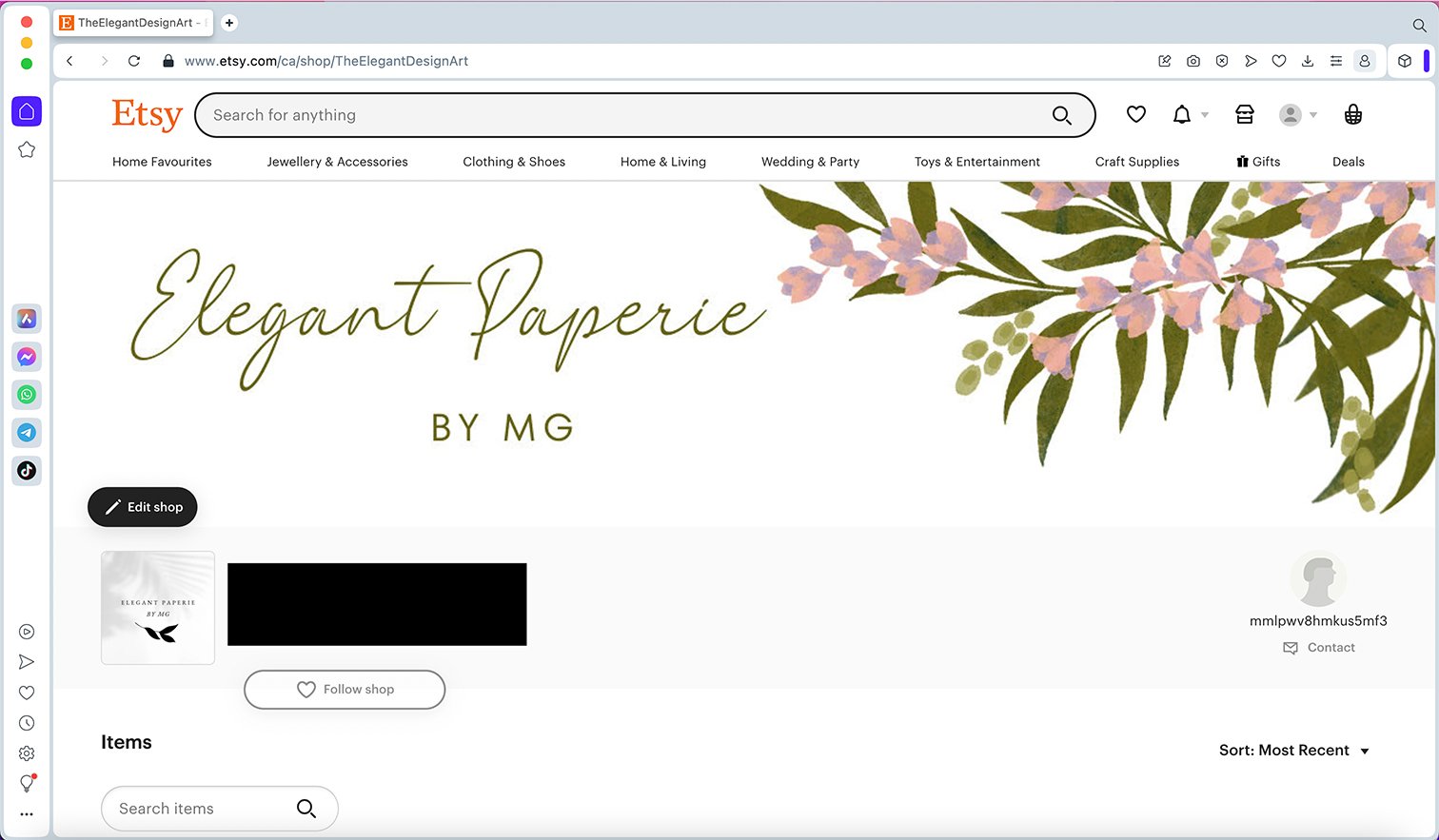
Written by Kash C., The writer has an experience selling on Etsy.